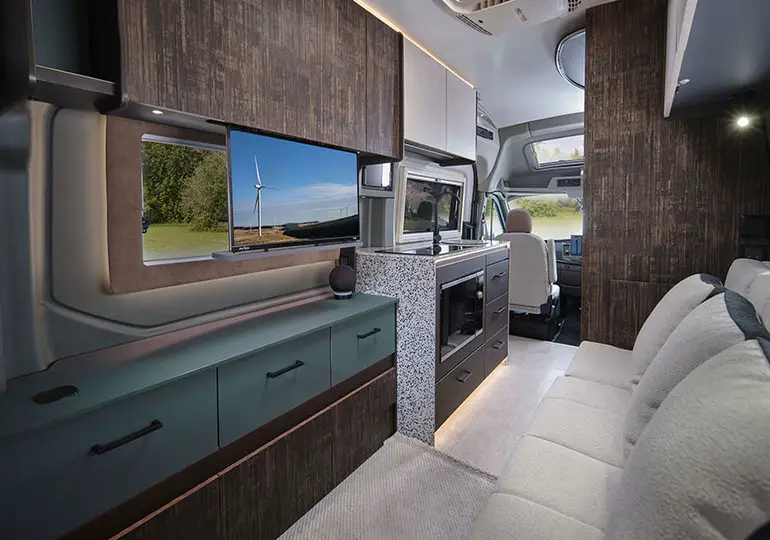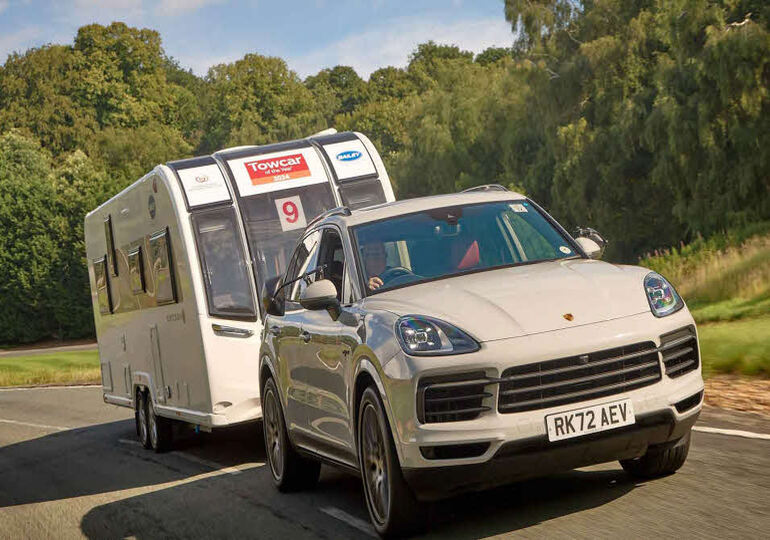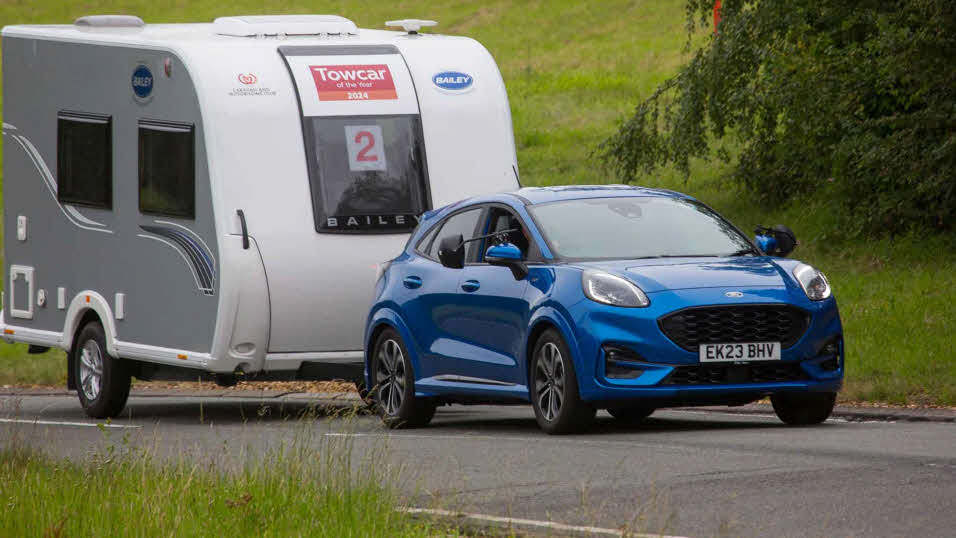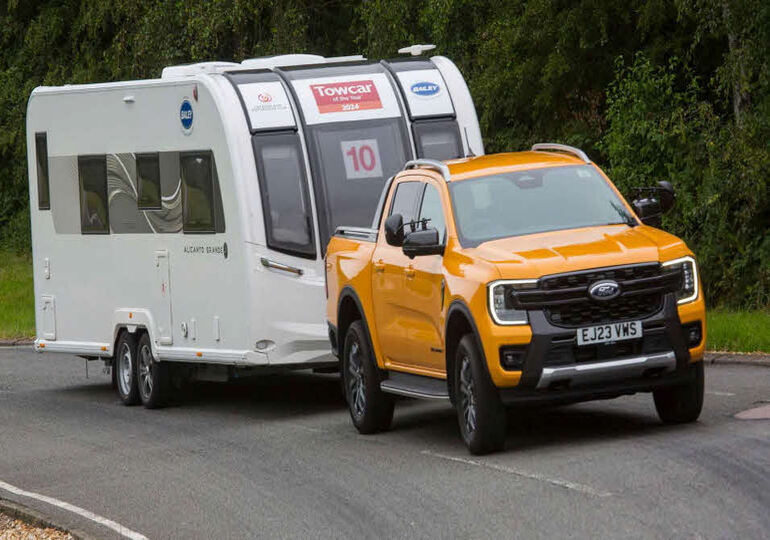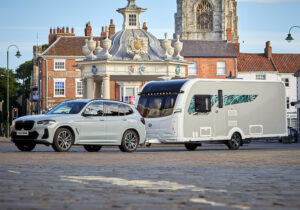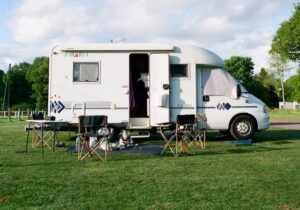Dan Cartwright has over 12 years of experience in the caravan and motorhome industry. He is a judge for a number of prestigious leisure vehicle awards and regularly heads off in his motorhome with his family. Every week, Dan shares his insights with the community. Here’s what he has to say this week.
If you’re looking to buy a second-hand campervan from a private seller, this article is for you. This week, I’m going to be talking through the trials and tribulations of picking up a camper directly from its previous owner, as well as everything you need to look out for.
But first, let’s consider two scenarios:
Scenario one
The first scenario involves Chris, who works in our office. 18 months ago, he bought a self-converted 2006 VW camper which he’d found on Facebook Marketplace. It had clocked 200,000 miles and he paid £16,000 for the vehicle.
Since then, it’s had a new intercooler, fan sensor, alternator, central locking system and immobiliser. Additionally, Chris has had to change the sliding door hinge mechanisms and seals, replace a handful of batteries and take care of a few more consumable parts and habitation issues on top of that.
Scenario two
In March this year, I picked up a 1982 VW T25. It’s bright green and those familiar with Vanny Adams will know it’s become an important part of the Cartwright family.
Initially purchased as a test vehicle, it’s been used daily on both long and short trips and has proven especially trustworthy on school runs, as well as other journeys to the coast and camping.
To be fair, I did take it straight for a major service upon buying it, which included all of the belts. But apart from needing a new tyre, there have been no issues at all.
Decisions to make before buying second-hand
This is a good time to clarify that I’m not talking about how much better I am at picking a second-hand campervan than Chris. There’s always a lot of luck involved. You can’t check out every aspect of the leisure vehicle before buying and sometimes consumable parts wear over time.
However, there are a few tips I can offer when it comes to selecting campervans to view, as well as some things you should inspect thoroughly when you see them.
Make, model and layout
Before you even open eBay, Autotrader, Facebook Marketplace or any other website that shows second-hand campervans for sale, take the time to decide what model you really want. Figure out if you want to have a pop top or high top and don’t compromise on the habitation layout.
Essentially, consider the overall style you want and start to set a clear budget. There are lots of places to help with the valuation of a campervan, such as Parkers or Autotrader. This will be based on factors like mileage, the quality of the vehicle for its year of manufacture and, of course, the model.
Purpose-built or converted?
Now, it’s time to decide whether you want a campervan that was purpose-built, a professionally converted vehicle with work carried out by an accredited company, or a self-conversion.
This is a big decision to make. The first two options, on the whole, are less of a risk in the second-hand market. When it comes to self-conversions, however, you could open the door to plenty of issues.
Whilst somebody could be a fantastic carpenter, electrician, plumber or mechanic, successful self-conversions require an individual with experience. This means knowing the most specific and intricate details, like how every intercomponent part works in conjunction with the battery and electrics.
This isn’t to say you shouldn’t look at self-conversions. Some people, of course, have the skills required to complete this kind of work. However, I’d highly recommend a purpose-built or professionally converted motorhome, as even the smallest of electrical issues can lead to massive, expensive repairs. Just ask Chris!
How to pick the right second-hand campervan
Now you’ve sorted out the preliminary decisions, it’s time to start the search for your private sale campervan. Keep your list of what is reasonable to you close at all times and stick to your choices. Most importantly, don’t be distracted by something just because it’s cheaper, or has a fancy paint job.
When looking at listings, particularly on sites like Facebook Marketplace, make sure any vehicles that pique your interest are priced closely in line with the actual value. If a camper is too cheap, or too expensive, don’t pursue it.
Take your time and visit a few options. Most models are abundant, so go and view some at the top and bottom of your price bracket. Remember not to panic and think you have to buy one immediately after viewing it.
By viewing several campervans, you’ll start to understand what the differences are between various motorhomes in your price range. Something that I’d always pay for is a full service history from a reputable dealership, which you should scrutinise to see what has been done at each level. This will tell you how well-maintained the campervan is and if things have been replaced before breaking, that’s a very positive sign.
When it comes to any second-hand marketplace, take the time to communicate with a seller before going to see a vehicle. A lot of the time, listings don’t tell the full truth and if you need to spend half a day driving to a van you’re interested in, it’s best to be sure it’s the real deal.
If there aren’t enough images, ask for more. Make any enquiries you want, from how the seat mechanisms work to where the fridge is, if you can’t identify this from the pictures. For professional conversions, ask about who did the work, then check out what models they have, if they’re still in business and whether or not you can get information about all the components through the handbook.
The checks you need to make before buying
When you’re viewing a campervan for the first time, do the same things you’d do for any other vehicle.
First, make sure it isn’t already warmed up before you start it. If the engine is already warm, walk away and try to return another day at short notice to see how it starts from cold.
Ask the seller to take you for a longer runout, then make sure you do a little bit of driving yourself. This will help you to clearly understand how the leisure vehicle runs.
Habitation checks
Having already decided on the type of layout you want, the habitation area is where you should get very touchy-feely. Open and close every locker, slide the seats and move all of the mechanisms.
Basically, try out anything that moves to ensure that each component is in working order. These things can all break and some of them are a pain to fix. This means it’s best to physically see the gas running, too. It’s no good saying “we don’t have a gas bottle” – bring your own, rig it up, test it out.
Damp testers cost around £20 and that’s money well spent if you’re viewing leisure vehicles with the intention of buying. It’s unlikely that you’ll actually have damp or rot in a conversion, but still check and especially focus on the flooring, which is often plywood, as this can become rotten.
I’d recommend a good 45 minutes to an hour in the habitation area trying out everything you can think of. If anything is broken, you need to know what it is and how to fix it before you pay for the campervan.
Aesthetics
My wife and I often go back and forth over this one and the only way to get around it is to quantify it. How much are aesthetic factors such as the colour, alloys or ‘go faster’ stripes worth to you?
This is coming from a man who drives a bright green T25 (that the wife loves!). You need to place a value on these aspects and, perhaps most importantly, don’t compromise on the habitation, service or anything else just because a motorhome looks beautiful.
The functionality needs to be taken care of first and that often means waiting longer or paying a little more to get those desirable elements on top, but the wait will be worth it.
Service your new campervan
Finally, once you’ve decided to purchase a leisure vehicle, I’d always budget an additional £500 for an immediate major service. Even if it’s recently had one, it’s ideal for your own peace of mind when spending thousands of pounds.
So, drive it directly from wherever you’ve picked it up to a reputable dealership or garage and book it in for a major belt, filters, oil and fluids service. At least if anything goes wrong after that, you know you’ve done everything you can and it’s just a case of bad luck.
Photo credit: Ricky Esquivel / Pexels
